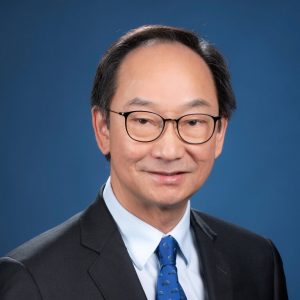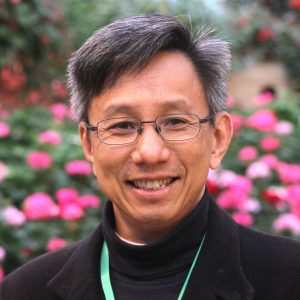
William C. Tang
Title: Subnetwork Communications within the Hippocampus and High-Efficiency Computing
Abstract: Current advances in neuromorphic computing have demonstrated thousand-fold reduction in power demand in solving artificial intelligence problems over traditional Convolutional Neural Networks. Power efficiency is mostly achieved through event-driven computation similar to one aspect of how the brain processes information. However, many other aspects of brain functions are poorly understood and implemented because of a lack of knowledge in network architecture within the brain. Our efforts to reverse-engineer the rat hippocampus in our in vitro studies have revealed more details about network coding that could inform neuromorphic computing design to further enhance power and performance efficiency, particularly in memory formation and retrieval. Our microfabricated platform is a 256-electrode array overlayed with a four-chambered microfluidic device into which entorhinal cortex, dentate gyrus, CA3, and CA1 neurons are selectively placed. After 3 weeks of reconstitution, their communicating axons can be monitored for spiking activity that develops in the looped network. This single axon spiking information reveals spontaneous readiness for differential coding between subregions and temporal integration in response to patterned stimulation. Sparse connectivity contributes to spike time coding. Subthreshold slow waves may independently control multi-timescale integration. A balance of excitation and inhibition is maintained by selective feedback. Power-law distributions of spiking enable a wide dynamic range of staged mechanisms for encoding temporal integration for strength and reliability. We expect these biologic principles of network architecture to inform neuromorphic computing for multiple aspects of low power artificial intelligence.
Bio:
William C. Tang received the BS, MS, and PhD degrees in Electrical Engineering & Computer Science from University of California, Berkeley. His seminal thesis work and invention of the microfabricated electrostatic comb drive has been one of the most widely cited contributions to the Microelectromechanical Systems (MEMS) field for over a decade and is still internationally recognized as the one of the fundamental building blocks for microsensors and microactuators research. Dr. Tang contributed to the automotive industry at Ford Motor Company and later space exploration at the Jet Propulsion Laboratory. Subsequently, he served as the DARPA Program Manager for various MEMS programs, the single largest US federal funding source for MEMS at the time. In 2002, he was appointed Professor of Biomedical Engineering with joint appointment with Electrical Engineering & Computer Science at the University of California, Irvine. Later, he was also jointly appointed with the Chemical and Biomolecular Engineering and the Materials Science and Engineering Departments. He was the first Associate Dean for Research in the Henry Samueli School of Engineering from 2008 to 2013. His research interests include micro- and nano-scale biomedical engineering, neural engineering, neuropathology and clinical applications. He is a Fellow with the Institute of Physics and the American Institute for Medical and Biological Engineering.
 Winston K.G Seah
Winston K.G Seah
Title: Quantum Internet
Abstract: The Internet has become the backbone of our society, transforming from a mere carrier of information to becoming the source of information, applications, and services. Quantum computing, which has been receiving significant limelight recently, promises capabilities that can solve computationally complex problems previously unachievable by classical computers. While data transfer between quantum computers can be achieved using quantum communications, quantum networking is critical to maximize the capabilities of quantum computing, similar to how the Internet transformed society and the way we used computers. Unlike classical computers that encode information using distinct “0” and “1” values, called bits, the quantum equivalent, qubit (or quantum bit), can be a superposition of “0” and “1”, with a unique property that it cannot be copied or done without being detected, making it highly suitable for security applications, e.g. quantum key distribution, secure access to remote quantum computers, etc. Conversely, inability to copy qubits also makes it impossible to use existing communication techniques, like repetition or signal amplification, making it a monumental challenge to transmit over long distances, motivating the development of new technologies, like quantum repeaters. The quantum internet is governed by the laws of physics and possesses no analogy in the classical networks. This talk will discuss the ongoing research on quantum communications and networking, touching on how designing quantum internet protocols requires a major paradigm shift and imposes new challenges to network design.
Bio:
Winston K.G. Seah specializes in algorithm and protocol design for networks in challenged conditions and extreme environments, such as, embedded systems with severe resource constraints, highly mobile networks, electromagnetic nanoscale networks and underwater networks. With the Internet of Things as the overarching application domain, his latest research includes algorithms and protocols for quantum internet, massive machine-type communications and ultra-reliable low-latency communications, as well as, novel approaches for network anomaly detection using artificial intelligence and machine learning techniques.
Winston received the Dr.Eng. degree from Kyoto University, Kyoto, Japan, in 1997, and ME and BSc degrees from the National University of Singapore in 1993 and 1987 respectively. In 2009, he joined Victoria University of Wellington, New Zealand, as Professor of Network Engineering. Prior to this, he has worked for more than 16 years in mission-oriented industrial research, taking ideas from theory to prototypes, most recently, as a Senior Scientist (Networking Protocols) in the Institute for Infocomm Research (I 2 R), Singapore. Winston strongly believes that research goes far beyond publishing papers and strives to solve challenging real-world problems using unconventional and innovative approaches.

